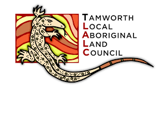Case studies: Aboriginal cultural values and renewal in NSW forests post-wildfire
 |
 |
 |
 |
 |
Three Aboriginal-led case studies have been undertaken to explore cultural values in forests before and after the 2019-20 wildfires:
- Banbai Country – Banbai Rangers with Tamworth and Guyra Local Aboriginal Land Councils (LALCs)
- Gumbaynggirr Country – Coffs Harbour and District LALC together with Gumbaynggirr Elders and Knowledge Holders
- Wiradjuri Country – Brungle Tumut LALC.
Each case study was facilitated by Firesticks Alliance Indigenous Corporation and guided by local working groups to ensure approaches were tailored to regions and involved relevant land management agencies, experts and knowledge holders. This project is part of a broader approach to develop a model to assess Aboriginal values across forest tenures through Aboriginal-led, Country-based assessments, monitoring, and research.
Reports are now available for each of the case studies, along with a synthesis report summarising the shared findings and outcomes from the project.
You can also watch videos about the Banbai and Gumbaynggirr case studies, as well as videos about additional projects currently being undertaken by these groups including fauna monitoring by the Banbai Rangers and cultural burning on Gumbayngirr land.
This work has been recognised by NSW Aboriginal Affairs and NSW land managers as an excellent showcase of the wide-ranging benefits of Aboriginal-led Country-based land management projects.
The findings
Each case study sought to answer core research questions and designed their own approach to answering these that responded to their interests and the outcomes they wanted to achieve.
Shared findings from the case studies are:
- there are significant knowledge gaps around Aboriginal cultural values (both pre- and post-fire), particularly where Aboriginal people lacked access or involvement in the management and custodianship of the area
- the fires have had significant impacts on many cultural values and practices
- some cultural values have been destroyed or are at higher risk due to the fires, for example burnt scar trees, rock art and stone artefacts that have been made brittle or exposed to erosion risks
- post-fire site visits discovered cultural values, including scar trees, artefact scatters and cultural resource sites, and allowed for continuation of cultural obligations
- except for Aboriginal managed lands, Aboriginal people are not adequately involved in land management and decision making, including the identification, management, and monitoring of cultural values – and this can lead to poor environmental, cultural, and socioeconomic outcomes.
The case studies also identified a range of areas for improvement, including:
- increasing Aboriginal involvement in public land management, particularly through Aboriginal-owned and managed land tenures, and whole-of-Country planning and management approaches
- improving relationships between Aboriginal people, Government and also private land managers to increase awareness, access and protection of Aboriginal cultural values
- expanding opportunities and resourcing for Aboriginal-led cultural value identification, management, access and monitoring
- greater Aboriginal involvement in fire planning, management, recovery and monitoring, including protection of at-risk values and/or participation in recovery activities.
The case studies had many additional benefits, including:
- demonstrating the importance and effectiveness of local, Aboriginal-led approaches
- facilitating new and stronger partnerships in science and information exchange between Aboriginal people, NSW Government land management agencies and other experts, including resourcing and support for local people to learn and apply forest monitoring skills and for Elders and knowledge holders to share their expertise and experience
- providing new opportunities for local Aboriginal people to identify, manage and renew cultural values throughout their Country, and continue cultural obligations
- allowing some groups to establish relationships with private landholders and gain access to significant cultural sites following a long period of exclusion.
